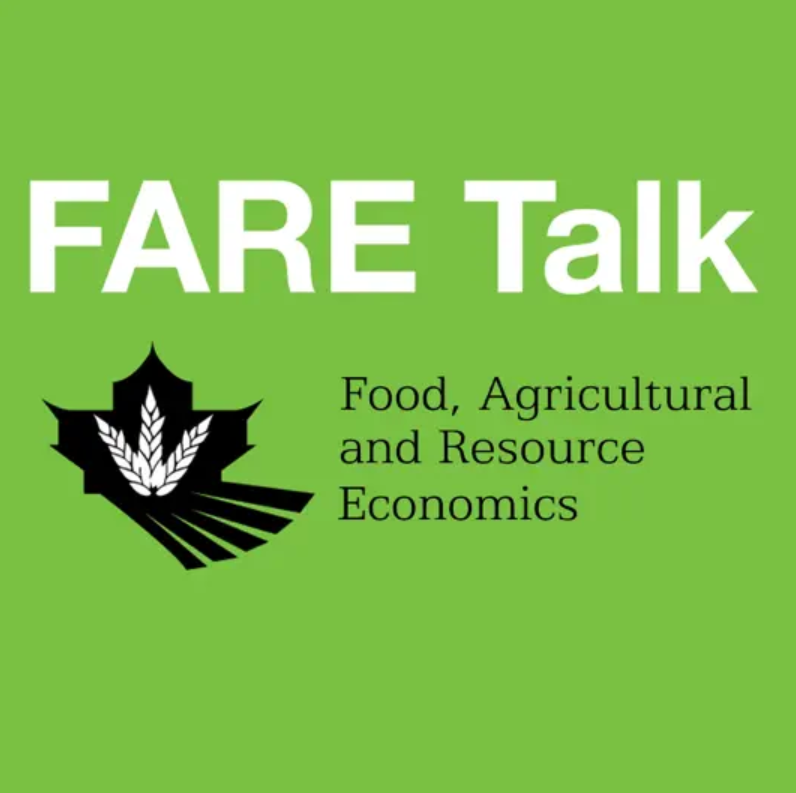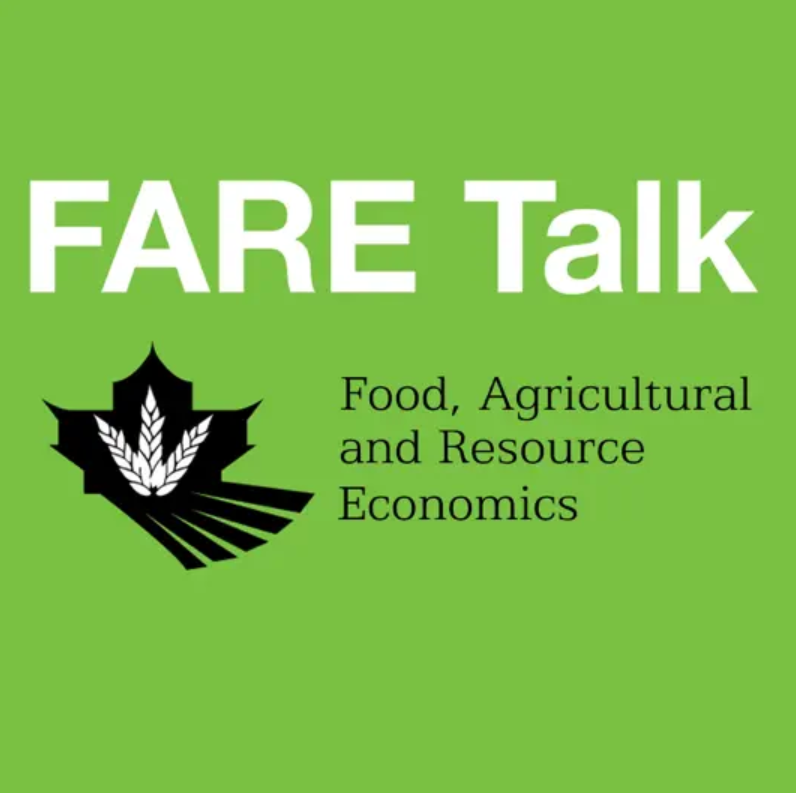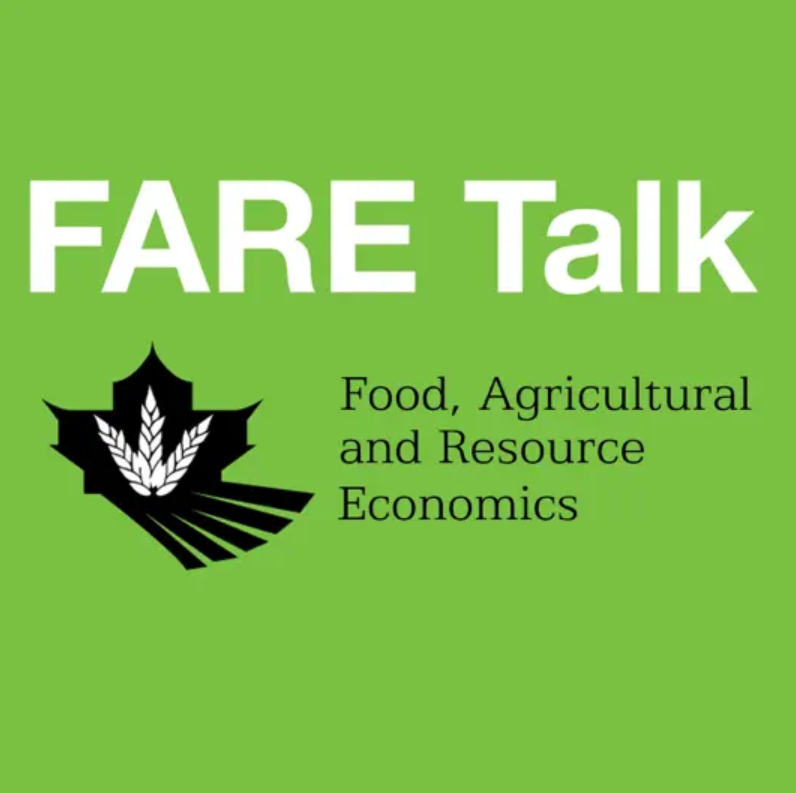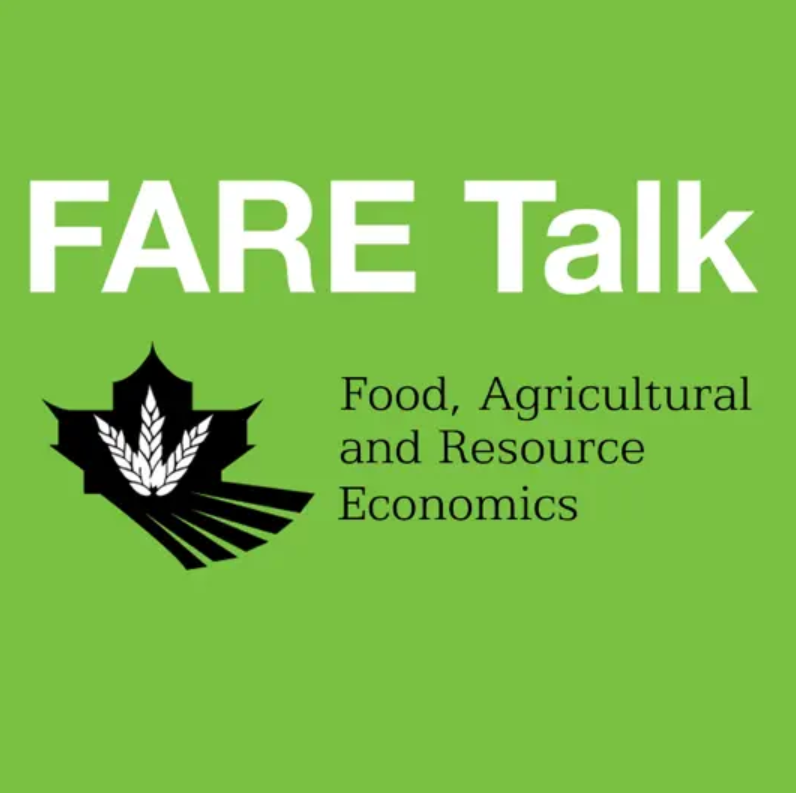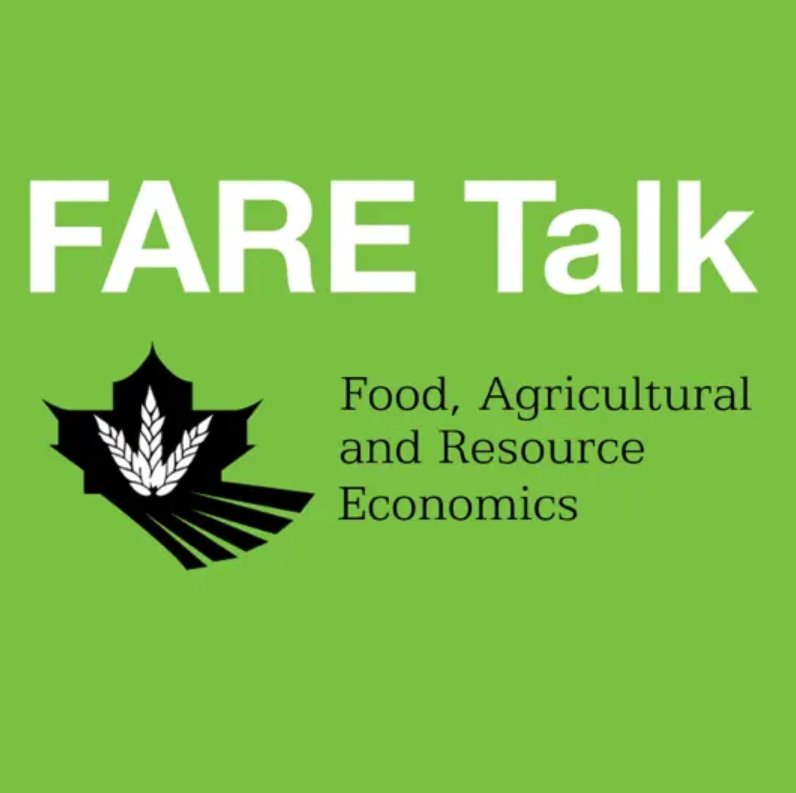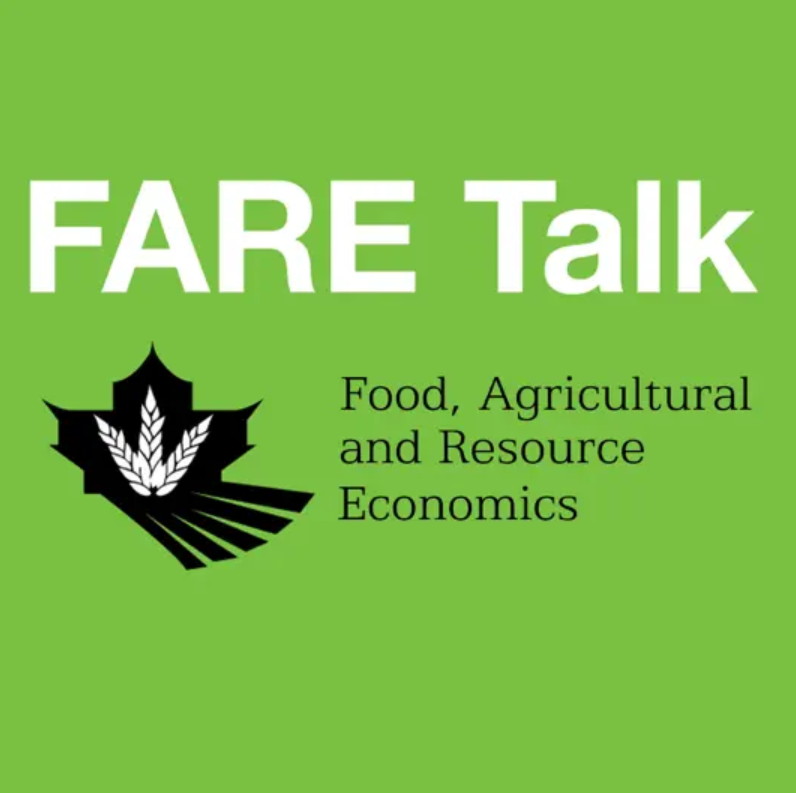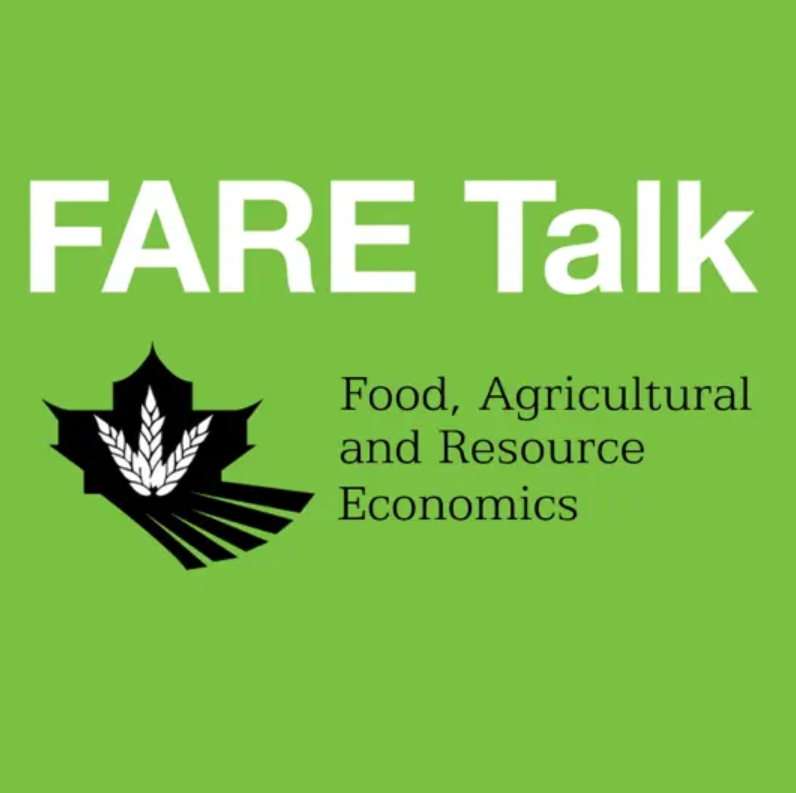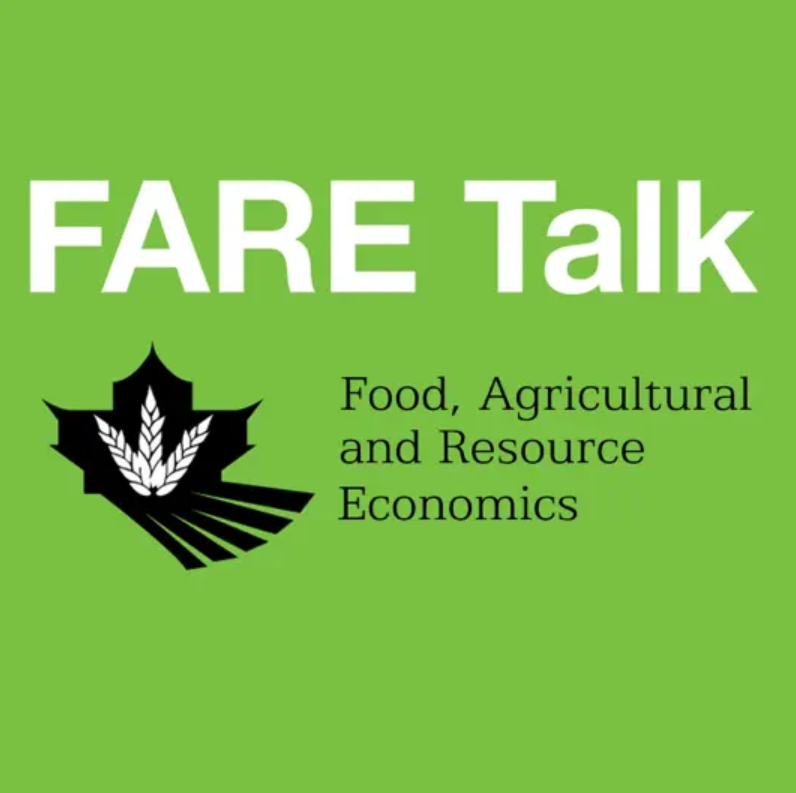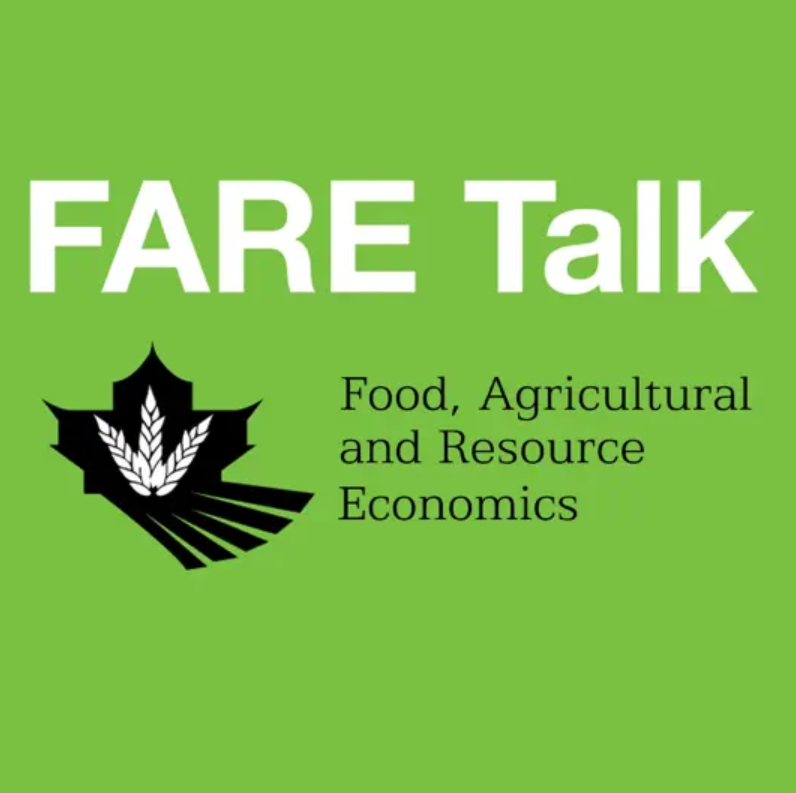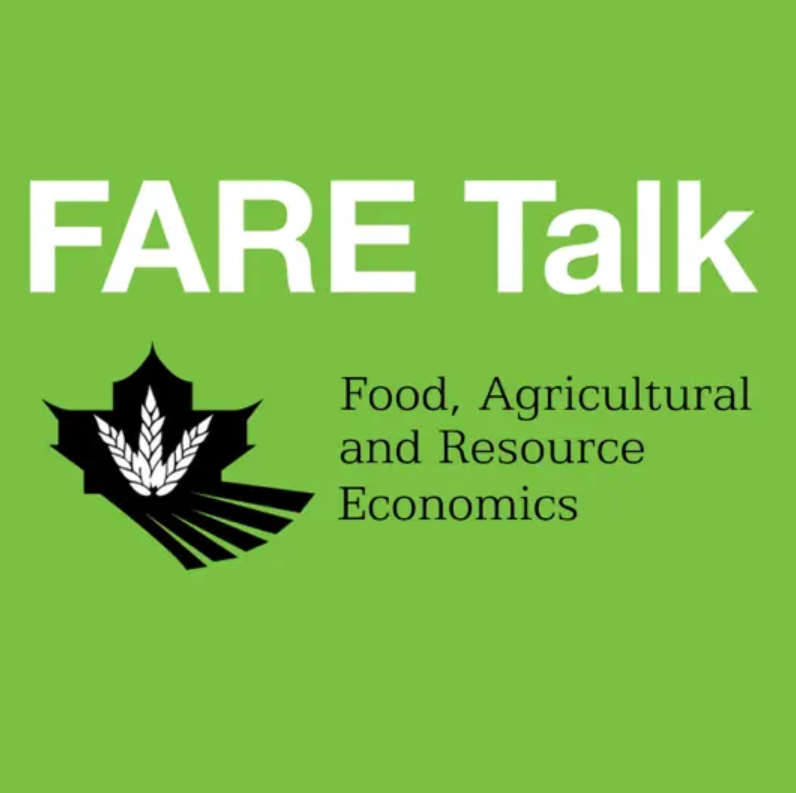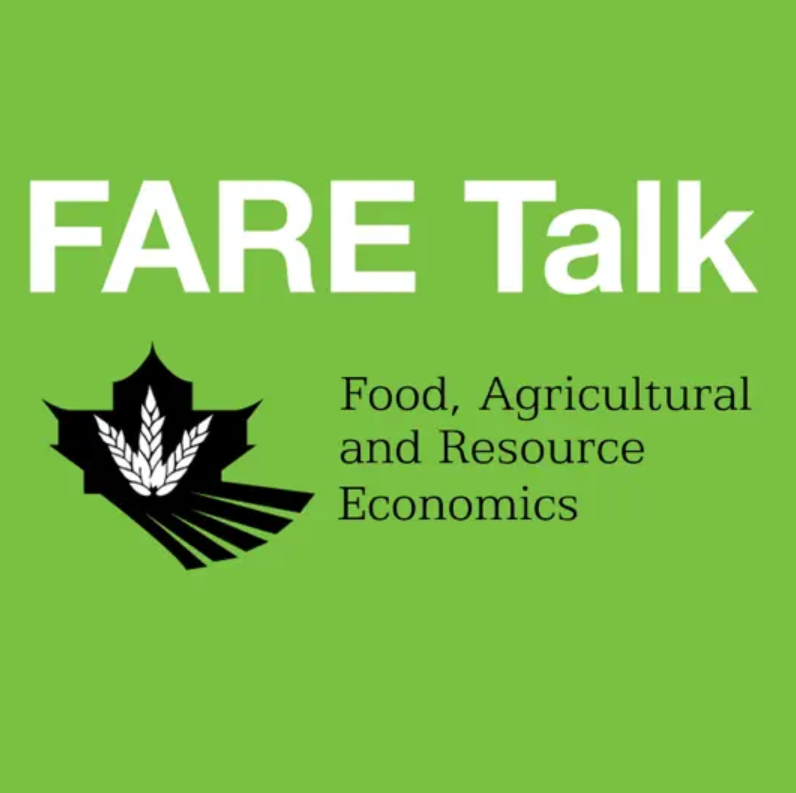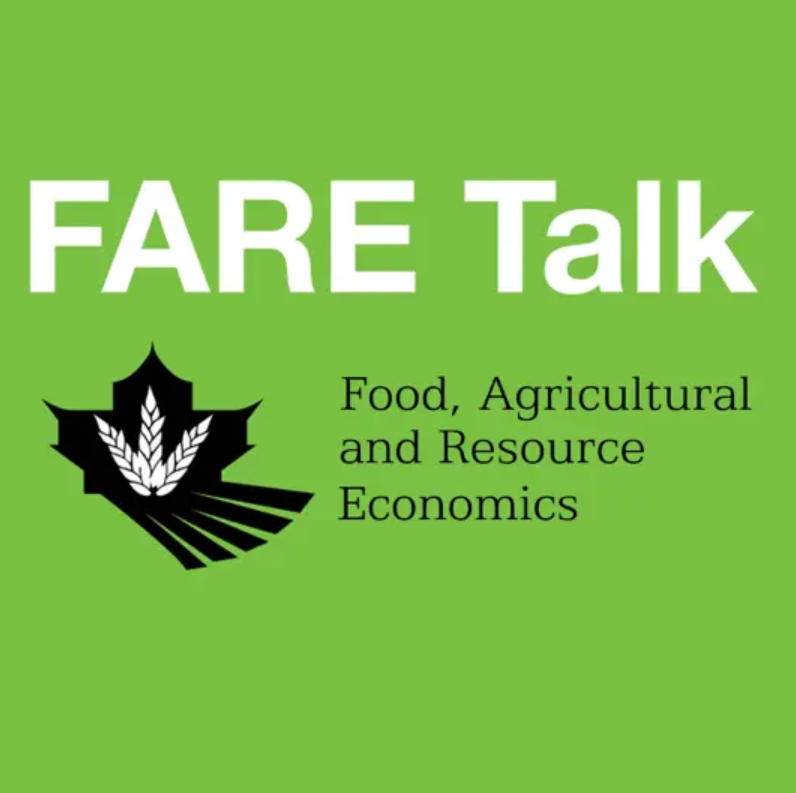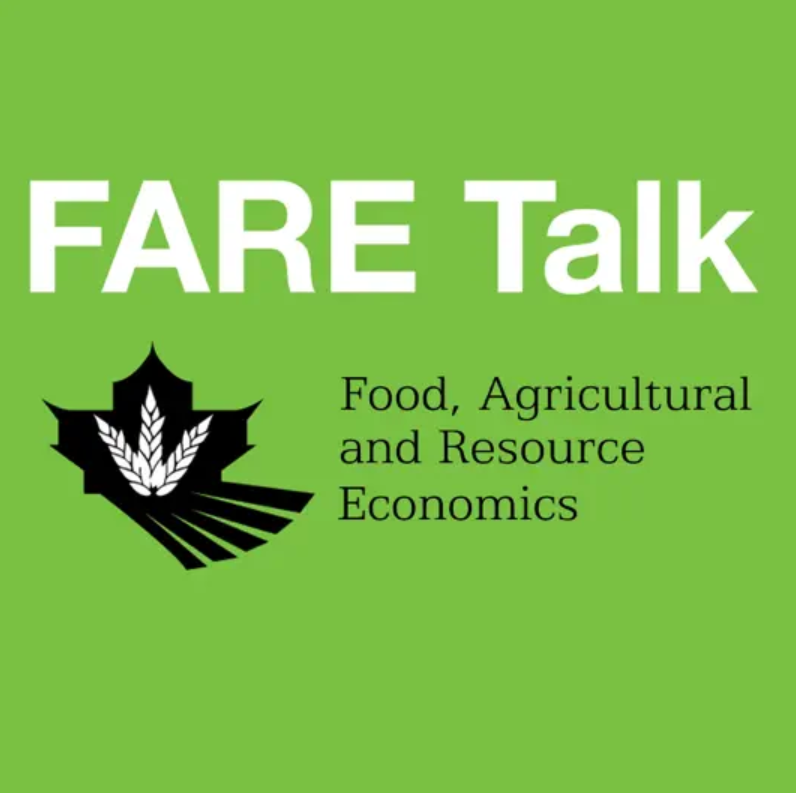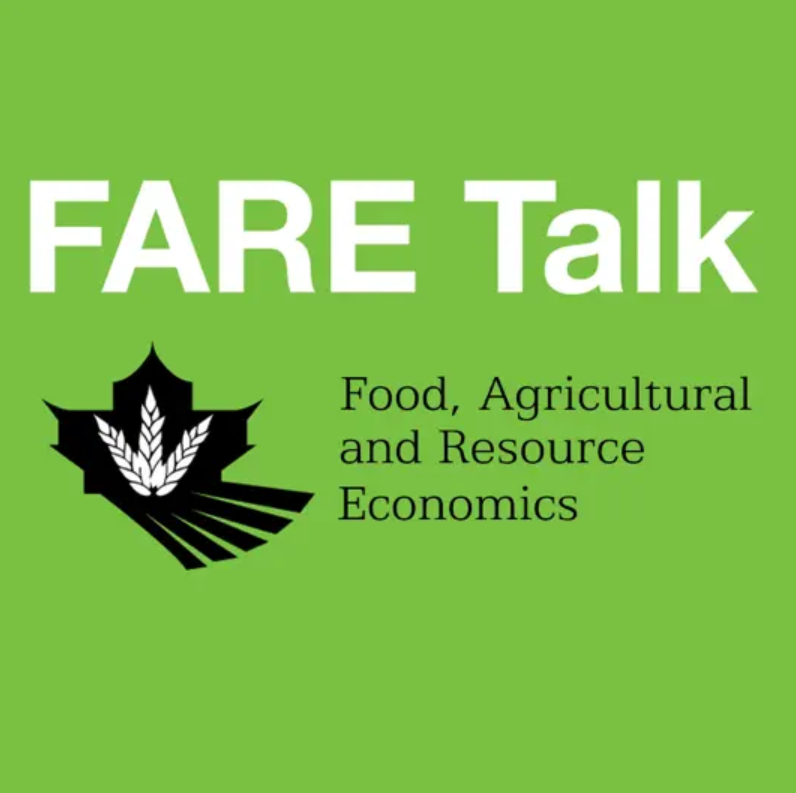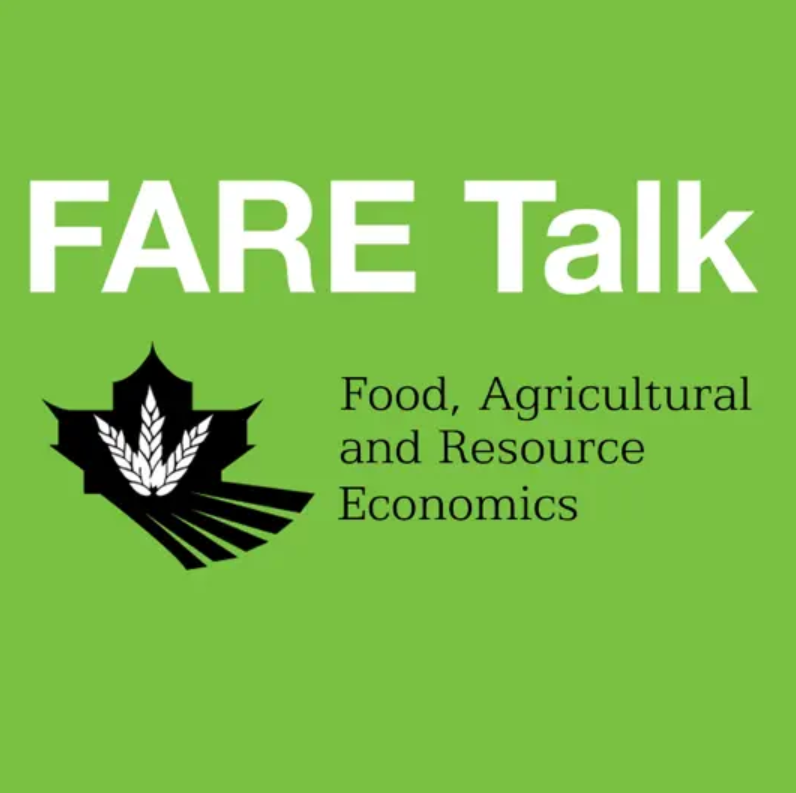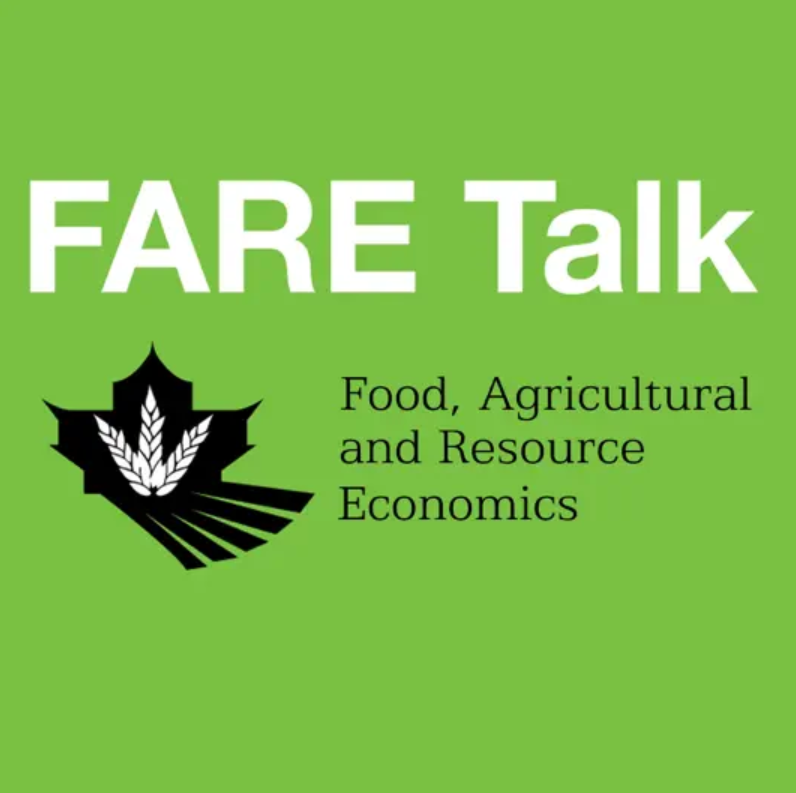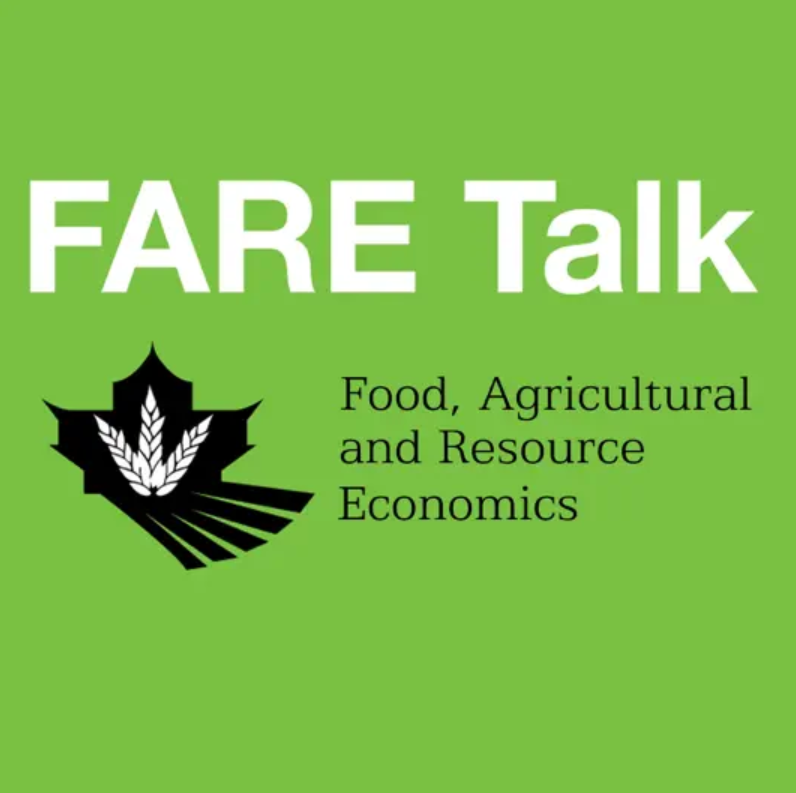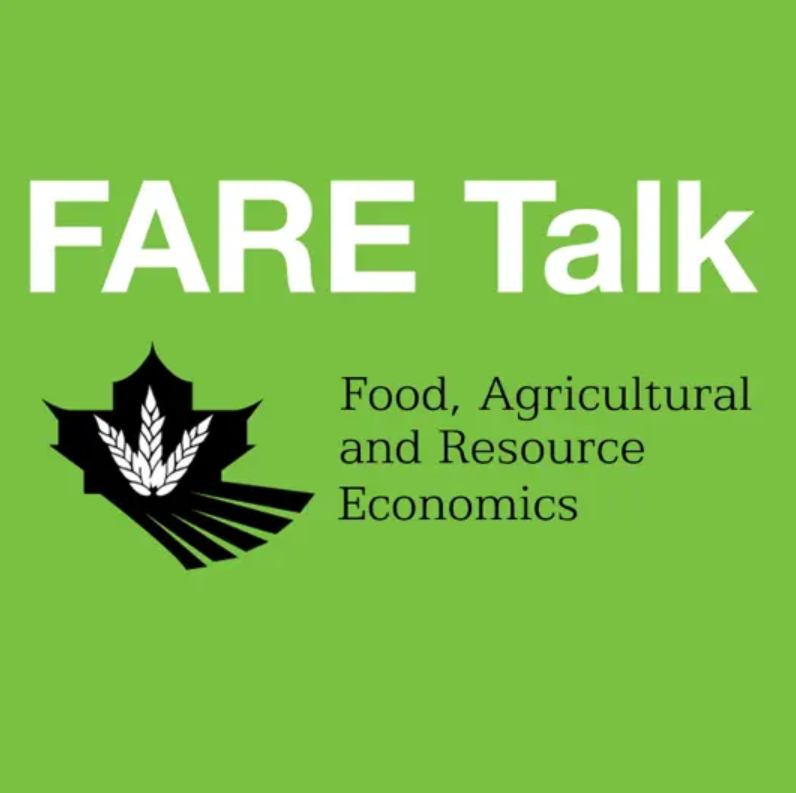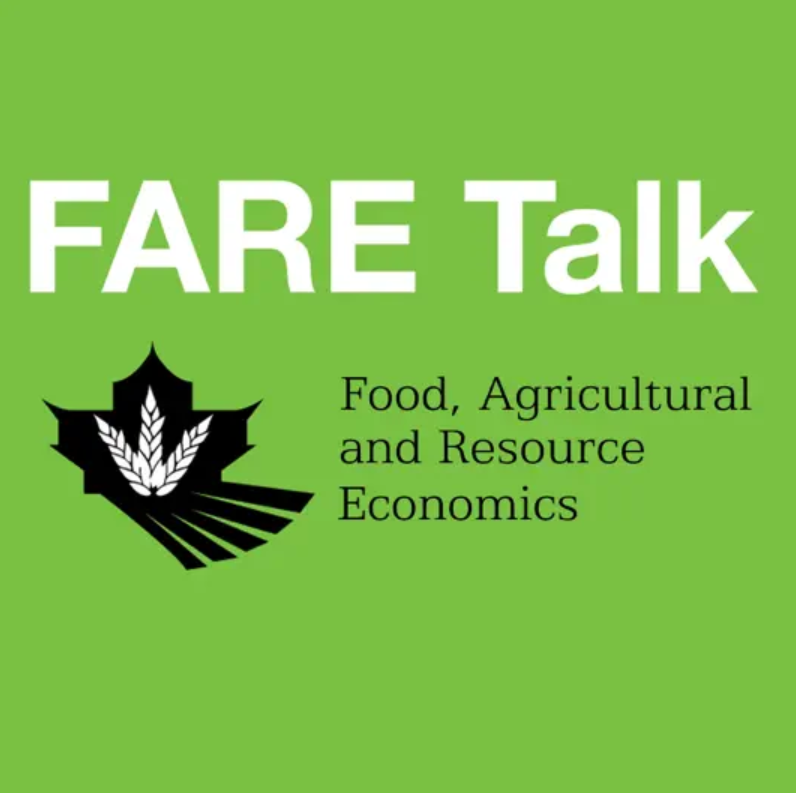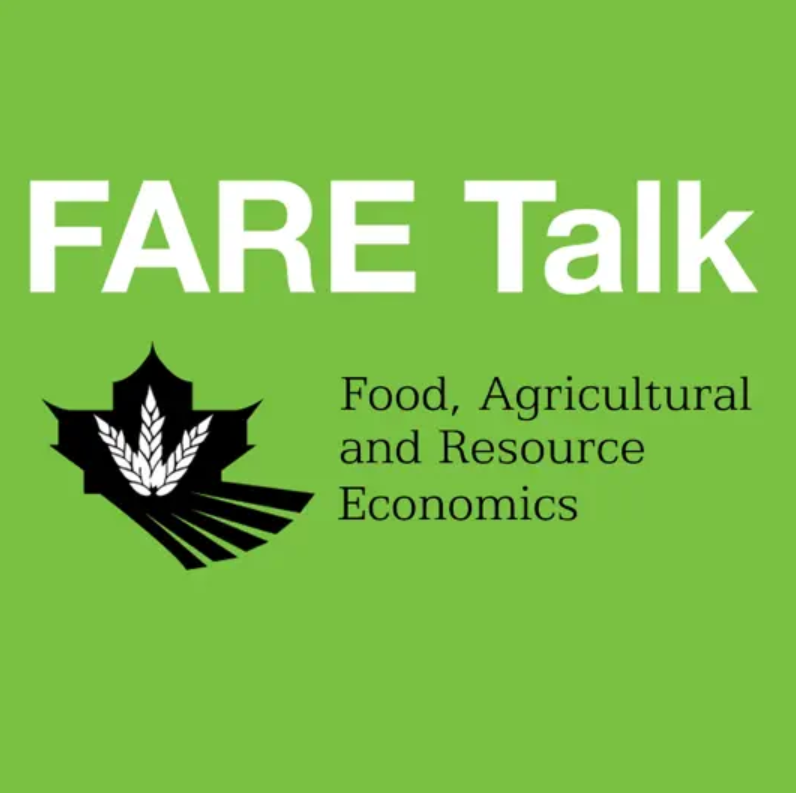Assessing agricultural policy in the twenty-first century: Who benefits from Agricultural Subsidies? What happened after tobacco quota ended in Kentucky? - October 25th, 2012
Description
In this podcast Barrett Kirwan and I discuss his research on two issues crucial to understanding agricultural policy and rural economic development in the twenty-first century.
Transcript
Brady Deaton Jr.: Welcome to FARE Talk, where we set out to provide enduring discussions on contemporary topics relevant to our economy, with particular emphasis on food, agriculture, and the environment. My name is Brady Deaton, Jr. of the Department of Food, Agriculture, and Resource Economics at the University of Guelph. I'll be your host. Barrett Kirwan is an assistant professor in the Department of Agriculture and Consumer Economics at the University of Illinois. Barrett, welcome to FARE Talk.
Barrett Kirwan: Happy to be here.
Brady Deaton Jr: I think the issues that you are examining, ag subsidies and the effective quota, are really critical to understanding both the historic and the future effects of ag policy. I want to start by discussing your first article, which was published in the Journal of Political Economy.
Barrett Kirwan: Okay.
Brady Deaton Jr: Which examined the incidence of US agricultural subsidies on farmland rental rates. You make a point that a primary goal of US agriculture policy is to support farmer income. Why does it lead you to examine the issue of rental rates?
Barrett Kirwan: The traditional theory, the story that I've always heard was that the subsidies get capitalized into the land value. I grew up on a farm in Idaho where we rented most of our land and so the idea that all the subsidies were getting capitalized into the land value meant that the subsidies was going to the landlord, who was not a farmer. It got me thinking about why are we giving all this money to landlords? I naturally looked at rental rates.
Brady Deaton Jr: I think the idea of that the public wants to support farmers is generally accepted, but the idea that that support could be going to landowners, many of whom are not necessarily farmers, that may be an issue of more debate. Were you surprised when you started looking into the data on farmland ownership, farmers versus non-farmer owners of farmland?
Barrett Kirwan: I was. In fact, I didn't realize that there were so many non-farmer owned acres. It turned out that during the time period that I'm looking at, about 45% of the farmland in the US is not owned by a farmer. It's owned by a non-farmer. I was surprised that the number was that big. It seemed to make the issue much more important.
Brady Deaton Jr: Why then ... Let's talk a little bit about the theory. You mentioned that you had heard this story that the value of any increase in farmer income would get bid into the, or capitalized, into the value of farmland. Break that story down for me a little bit. How do economists generally make this argument. Why is that a story that you heard before?
Barrett Kirwan: This I think was something I heard growing up just talking, listening to farmers, but then getting into economics, it was probably one of the very first theories that I learned that if you have an input into production and that input has no elasticity, it's unresponsive, but will the rents will ultimately go to that input. I think it may have been in my very first semester of microeconomics that I learned about Ricardian rents and this idea that ... Farmland was the example that was given and this idea that the more productive farmland that is given, earned, returns above what's the average land would earn. This idea that any productivity that the land has gets capitalized into this value, and if you think about subsidies, it's just, in terms of value, it's just adding to the value of what's being created from the land. Because the land isn't [inaudible 00:04:23 ], the subsidies get captured by the landowner.
Brady Deaton Jr: When you were reviewing the literature on this, did you find a lot of empirical work that had researched this question? There was a theory here that if I have a more productive farm and I'm renting that out, that I'm going to charge more for it. I'm going to get more money for it, and if you have a policy that provides more profits, than I'm going to capture the value of that policy, but had there been a lot of studies that empirically examine this question?
Barrett Kirwan: Surprisingly there haven't. There are a couple very early studies that actually looked at tobacco quotas [inaudible 00:05:05 ] a subject that [inaudible 00:05:07 ] we're going to talk about today, but they were looking at tobacco quota in terms of, as an asset, does the value of a quota get capitalized into the value too. The subsidy gets capitalized into the quota itself. Based on that early work, it confirmed what economists had presumed and it's funny, but it seems like that was about all they needed. From then on, it was just everybody knew that some, almost all of the subsidy would go to the landlord, and the amount of empirical research on it though was really quite small. It was a little bit surprising.
Brady Deaton Jr.: It's somewhat surprising also that policies that were designed to help farmers would persist in light of that theory, especially when we started to understand that so much, nearly 50%, or you say 45%, of the farmland wasn't owned by farmers. I wonder if people just didn't understand the degree of non-farmer ownership of farmland or whether they really accepted that basic tenet.
Barrett Kirwan: Yeah. I'm not sure. I think that was one of the things that was most disturbing to me, and even before I knew the extent to which the farmland was rental land, it just didn't seem right to me that ... It seemed liked decades you had agricultural economists testifying before Congress, telling them that these subsidies are ineffective, they go to the landowners, and Congress never really responding. I wanted to dig into that. Either way, because the theory is not true, that's interesting. If it's because the theory is true and somehow the landowners have more political power, and that's what's driving policy, that's interesting too. That was one of my key curiosities in getting into it.
Brady Deaton Jr.: All right, what do we need to know? Now you study different policy periods. It seems to me the one you describe, and maybe you could just give us a basic overview of those policy periods, but it seems to me that in each case, you're concerned about explaining whether or not the landlord and the tenant could anticipate the amount of subsidy that would be paid and maybe you could describe that subsidy, and also the magnitude of that subsidy.
Barrett Kirwan: Right. One of the big issues during this time period was the decoupling, as they've called it, of farm payments where it went from a period where the subsidy was dependent on the price of the commodity. If the price was low, the subsidy would be high, and vice versa, if the price were high. They turned it into a subsidy that was not dependent on the price and not dependent on production. The idea was that there's this niche timing in terms of you sign a rental contract in the spring, but you don't really know the price or the subsidy that you're going to receive until the fall. In the beginning when there was this uncertainty about the price, it wasn't clear that you would actually find ... The empirical result would actually be valid because you didn't know what the farmer was anticipating. As time went on, as the subsidy became less dependent on the price of production, it became much more certain to the farmer in the spring and to the landowner what the subsidy would be.
Over time, you could see that the likelihood that the subsidy would get bid into the cash rental rate would have increased because the farmer would've been more certain about the subsidy that was going to be paid at the end of the year. Trying to I guess "fix" that problem at the beginning, and then using later periods to verify that that fix works, that was part of the work into the paper.
Brady Deaton Jr.: Right. Just [inaudible 00:09:47 ] maybe one example, in the 1996 Federal Agricultural Improvement Reform Act, before that, how would a landlord ... What would a landlord and tenant have known about the subsidy, before that reform act of 1996? What would they have known about the subsidy that the operator or the farmer actually working the land would have gotten?
Barrett Kirwan: Probably the most important, in my eyes, the most important thing that they would've known in the ... Not only was the subsidy dependent on the price, but the subsidy was attached to a specific acre of land, and the subsidy also depended on the productivity of that land. Before 1996, they might have a general good idea about the price based on future prices and their expected bases [inaudible 00:10:49 ] may have been able to form some pretty good expectations that way, but in terms of the analysis, knowing that you have a more productive piece of land that ... As a landlord, your more productive piece of land is being rented out. Not only can you charge more because it's more productive, but you could charge more because the subsidy is a function of that productivity. The subsidy's going to be even greater on the production land than it is on the less productive land. Being able to control for that actually, being able to account for the fact that a lot of the variation we see in the subsidy is caused by the productivity of the

